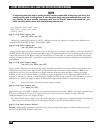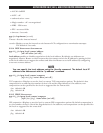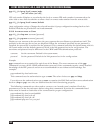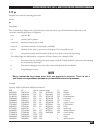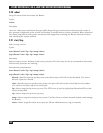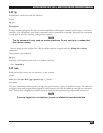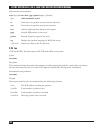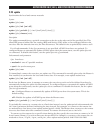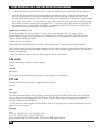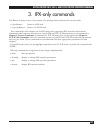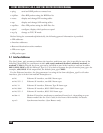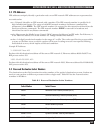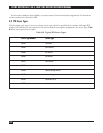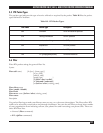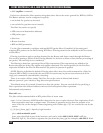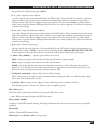
ASYNC ROUTER AR-P, AR-5, AND SYNC ROUTER REFERENCE MANUAL
186
+—If the first time is preceded by a plus (+) sign, the following three times specified are ignored.
time1—If you specify a value in the time1 parameter preceded by a plus (+) sign, then it becomes the
interval of time at which a connection is attempted. If you do not specify a + before the value, time1
becomes the first time during the day a routine connection is attempted. Use the 24-hour format (hhmm).
time2, time3, time4 If no + is entered before time1, then time2, time3 and time4 are the following three
times when a routine connection is attempted. If a + is specified, then these values are ignored. All
time parameters are cleared when the update command is issued. To change the second, third or
fourth time, the preceeding times must be re-entered.
update [iface] timeout [mins]
To set the amount of time (in minutes) to leave the connection open, use the update timeout
subcommand. This is crucial for timing out remote users on NetWare networks. This time must be
greater than the longest user timeout used in a NetWare server. To compute a NetWare server’s user
timeout, use the following formula:
NetWare Server’s User Timeout =
(Delay Before First Watchdog Packet) + (Number of Watchdog Packets) * (Delay Between Watchdog Packets)
If the update timeout is not long enough, remote users who have restarted or turned their machine power
off may not be cleared from central-site NetWare servers. They may stay logged in forever. The default
timeout is 10 minutes.
mins The timeout value in minutes. The default timeout is 10 minutes.
2.26 version
Display the Router’s software release number
Syntax
version
Description
The version command displays the software release number of the Router.
2.27 who
Displays information about who is logged onto the Router.
Syntax
who
Description
The who command displays the login name, terminal name, login time, and network address for each LAN,
user or client currently logged onto your Router. Who also shows login information for authenticated
remote systems currently logged on. For a remote system (client or LAN), negotiated IP and IPX
interface addresses are also shown.
LANs, users or clients logged onto the Router who are configured to not require authentication, do not
appear in the who report.
Example
who
root net Apr 27 11:11 131.33.12.20) telnet
root net Apr 27 11:25 131.33.12.09) ftp
arrow modem0 Apr 27 11:30 IP Addr: 131.143.16.1 IPX Addr 1222.0.0
guest modem2 Apr 27 13:05 IP Addr: 131.33.12.15 IPX Addr 1333.0.0



